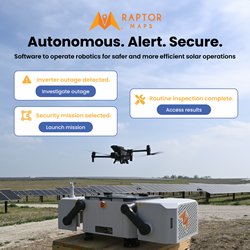G3 Inspires a Safer Future with Fire Resistant Battery Materials
G3-Fireshield Technology is the only multi-component approach to prevent Li-ion battery fires
Global Graphene Group (G3), an advanced materials company specializing in graphene production and energy storage technology, announces G3-Fireshield Technology - a suite of next generation battery components to dramatically reduce the risk of fire occurrences in EVs, portable electronics, and a range of other devices. This breakthrough is the first of its kind to overcome the intrinsic flammability problems associated with multiple battery material components - a frequently understated issue by recent press.
Reports of commercial battery failures have become all too commonplace, having now afflicted everything from aircrafts to all-electric vehicles, cell phones, and various other consumer electronics. If history is to teach us anything from these incidents, it should be that the make-up of conventional Li-ion batteries is due for an overhaul.
A conventional Li-ion battery is made up of three primary components: a negative electrode, a separator soaked in electrolyte solution, and a positive electrode. At elevated temperatures, brought on by mechanical, electrical or thermal abuse, each of these components undergoes chemical and/or structural changes that release energy from the cell in harmful ways.
"The result is what we have seen in the news time and time again, and, unfortunately, this multifaceted issue has been addressed with solutions that overlook what we know to be the heart of the problem: the Li-ion battery materials themselves," says CEO and Chief Scientist Dr. Bor Z. Jang. "Without proper material improvements, these battery fires are only likely to continue as demand for portable electronics with longer battery life and enhanced performance increases."
The team of battery scientists at G3 has worked tirelessly over the years developing a total solution to eliminate Li-ion battery fires once and for all. Acknowledging the three most susceptible components of a Li-ion battery, G3-Fireshield Technology offers a graphene-protected cathode, non-flammable electrolyte, and modified separator to achieve an unrivaled level of battery safety.
G3-Fireshield Technology features a graphene coating that is compatible with multiple cathode materials, allowing widespread adoption to improve cathode thermal stability. This is made possible by graphenes ability to act as a barrier to unwanted oxygen release from the cathode, as well as its high thermal conductivity which promotes efficient heat dissipation from the cathode material.
Also featured is G3s Non-Flammable Electrolyte (NFE-LP), a drop-in solution to offer current Li-ion batteries an alternative to the most energetic component of the entire system. NFE-LP is liquid-phase, and thus offers similar performance properties to what are already known in todays electronic devices. A key advantage of this material is its compatibility with various off-the-shelf anode and cathode materials, enabling facile adoption into the cell manufacturing process.
G3s modified separator offers protection in the event of a short-circuit and temperature increase. This material layer does not melt or shrink at elevated temperature, which is a necessary feature not offered by current polymer-based separators. Maintaining the structural stability of the separator layer is essential in preventing a complete and sudden release of energy from a Li-ion battery. Consider that a 3.8 V, 3 Ah cell phone battery, when shorted, would release the energy equivalent of over 1,300 firecrackers. Similarly, a 36 V, 15 Ah e-bike battery stores an amount of energy comparable to a stick of dynamite! Both good reasons to re-evaluate the design of Li-ion batteries.
The materials comprising G3-Fireshield Technology are all commercial-ready, having undergone stringent performance evaluation tests relative to traditional Li-ion batteries. Internal results suggest that when the latter is subjected to a nail puncture test, the corresponding energy release increases the battery surface temperature upwards of 500 °C. In contrast, a prototype battery using G3-Fireshield Technology experiences negligible temperature increase (< 10 °C) and quickly stabilizes after nail penetration.
Visit https://www.theglobalgraphenegroup.com/energy-storage or contact sales(at)g3-am(dot)com for more information about G3-Fireshield Technology.
About Global Graphene Group
Global Graphene Group (G3) - now the holding company of Angstron Materials, Nanotek Instruments, and three other divisions - develops, sells and licenses advanced graphene and graphene-enabled technologies for next-generation products such as phones, tires, paints, and electric vehicles. G3s pioneering work on graphene-enabled battery technologies has led to a breakthrough in battery safety, one empowered through a multi-component materials approach that now solves an issue which has plagued the electronics industry for over two decades. G3-Fireshield Technology features graphene-protected cathode materials, a modified separator layer, and a non-flammable electrolyte that together result in a much safer Li-ion battery for consumers.
Featured Product

